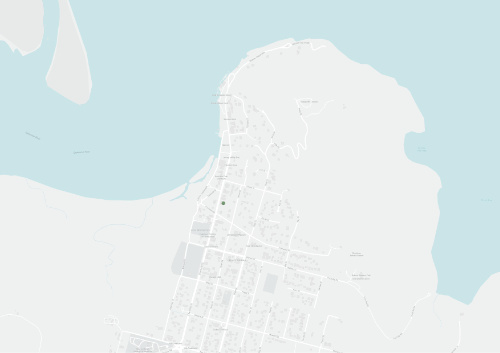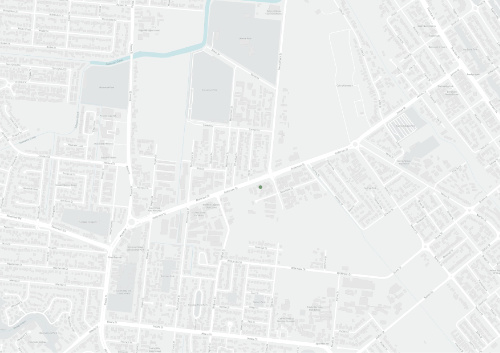Cape York Peninsula is a dream destination, the ultimate road-trip, for people who love four-wheel-driving, fishing and camping. Visitor numbers increase every year, and most take good care of the place. But a small minority are causing problems for other visitors, the region and its people.
Water
Related Content
Cape York Peninsula is one of five Queensland regions developing a Reef Community Action Plan for the community to take part in meaningful local action to benefit the Reef and local environment. This Community Action Plan (CAP) was developed through a review of existing plans combined with the contributions of Traditional Owners, youth and community members at seven workshops from October 2020 to January 2021.
Across the workshops, 13 priority strategies were put forward, which fall into four themes:
A collection of resources for the Western Cape Turtle Threat Abatement Alliance
A collection of resources and documents relating to the Eastern Cape Water Quality Improvement Plan.
Cape York NRM delivered Sustainable grazing management and on-ground works: maintaining Cape York’s resource base for sustainable management and use – reducing pests and weeds, improving water quality
in 2013-2016. The project was funded by the Queensland Government’s Queensland Natural Resource Management Investment Program.
The project had a broad impact over its three years of implementation, with signi cant outcomes in developing best practice frameworks, coordination, engagement, capacity building, on-ground works, planning and resource assessment.
Seagrasses are marine flowering plants that have adapted to growing in muddy, near-shore environments. They form meadows wherever the ocean is shallow enough to allow the sunlight to reach the sea floor. Seagrass meadows are found in river estuaries, along the coast and, if the water is clear enough, way out to sea in waters up to 60 m deep. Recent mapping of the seagrass distribution along the eastern half of the Northern Territory coastline found over 70,000 hectares of intertidal and shallow sub-tidal seagrass beds.
Any activity that occurs under the sea has the potential to generate noise pollution that disrupts marine animals. The most significant sources of damaging noise are seismic surveys, blasting, construction and sonar devices. Animals that are the most sensitive to underwater noise are those that use echolocation or sonar for feeding and navigation. Dolphins appear to be particularly sensitive to high-pitched noises, such as those caused by pile-driving or drilling, and can be affected from distances of up to 1-2 km. Whales tend to be affected by deeper sounds.
Has it been a soggy start to 2021 for most across Cape York Peninsula? It is wonderful to see so much of the landscape come alive early on in the year, and it is certainly flourishing. March flies, mozzies and flying ants are out in force making sure we all know that the rainy season has embraced us.
Following quite a short-lived wet season for three quarters of our region in 2020, I am sure the consistent rainfall is welcomed by those who are receiving it.
Those living and working on the land, with so much rainfall unfortunately comes the erosion, washouts and damage.
Words Juliana Foxlee | Photo Andrew Brooks
Cape York NRM and Northern Gulf Resource Management Group are working with graziers in the Mitchell catchment to help them develop their knowledge of native vegetation management in a bid to reduce erosion.
Cape York NRM Acting Principal Program Manager Michael Goddard is managing the project.
Cape York NRM’s Community Action Plan (CAP) team will soon be heading to three communities in the south-east Cape to run workshops to develop the Cape York CAP.
The Great Barrier Reef Foundation will compile input from six Queensland regions to create the state’s overall Plan that will identify shared goals for community Reef protection.
Words Abbey Ernst and Robyn May | Photo Robyn May
2019 marks a decade of successful operation for the Paddock to Reef Integrated Monitoring, Modelling and Reporting Program (Paddock to Reef program).
It is through the Paddock to Reef program that Cape York NRM has effectively continued its work with landholders in the Normanby catchment of the Great Barrier Reef.
Some great things have been happening on the land in Cape York during 2019–2020. Projects continued to roll out across the Cape despite the disruption of COVID-19 border closures and travel restrictions.
Cape York NRM’s Sustainable Agriculture and Water Quality team supports Cape York people to enhance agricultural practices and improve the quality of fresh and marine water. The team and its partners have worked across a variety of projects during 2019–2020 including hazard reduction burns, gully remediation and streambank stabilisation.
Projects will be spread along the full length of eastern Cape York in an endeavour to protect fragile coastal ecosystems—wetlands and floodplains, coastal vegetation, and potential turtle nesting beaches—under the Catchments to Coral program that is funded by the Australian Government’s Reef Trust.
A Catchments to Coral Reference Group was established in May this year that brings together a wide range of expertise from individuals and organisations to support the coordinated and strategic delivery of the Program’s outcomes and objectives.
Words Robyn May | Photo Jessie Price-Decle
Cape York grazing families didn’t let a little thing like a Cat 1 cyclone deter them from heading to the 2019 Cape York Grazing Forum held in Laura recently
Cape York NRM ran the event in partnership with South Cape York Catchments, Rural Financial Counselling Services North Queensland, AgForce, Queensland Department of Agriculture and Fisheries, and was a great success.
Words Abbey Ernst and Robyn May | Photo Kerry Trapnell
Abbey Ernst started work as Cape York NRM’s Sustainable Industries Officer in December 2018. She will work on the Queensland Government’s Paddock to Reef project, and the Federal Government’s Healthy Farming Futures project.
Thanks to funding from a combination of programs, Andrew Hartwig from Cape York NRM recently coordinated aerial burning across a number of Cape York properties.
The early burns were designed to reduce fuel loads and connect fire breaks on a landscape-wide scale, and were carried out by Cape York NRM in partnership with South Cape York Catchments and Cape York Weeds and Feral Animals Inc.
Automated sampling and new testing sites are among the latest innovations being introduced at Lakeland to improve the detail of water quality information in the local area. Cape York NRM has been working with landholders and the Department of Environment and Science to ensure real-time information on just how healthy the waterways are.
As part of this project, the Department will be installing an autosampling station, which will be maintained by Cape York NRM, on the Laura River.
Welcome to our first newsletter for 2021. Some people will be glad to see the back of 2020, but there were many good things to come out of the previous 12 months. During 2020 Cape York NRM was able to restructure its operations and program support so that we are able to deliver the best on ground projects possible and we have an incredibly busy year planned for 2021. We welcome four new staff to the team and the Cooktown office is now bursting at the seams.
Words Sandra Lloyd | Photo provided
Cape York Natural Resource Management (Cape York NRM) has a range of projects focusing on water quality monitoring, grazing and horticulture, weeds and feral animals and gully erosion control. These projects combine to deliver a comprehensive approach to improving the sustainability of the industries and communities on the Cape along with protecting the natural assets and improving quality of water entering the Great Barrier Reef.
Words and photo Robyn May
Rubber vine has been treated in the Laura region by Cape York Weeds and Feral Animals (CYWAFA) Inc. with support from Cape York NRM.
Cape York NRM Gully and Grazing Project Officer Michael Goddard said the project was all about restoring native ground cover and reducing erosion.
‘The Laura River Rubber Vine Control Project is reducing the amount of rubber vine growing along the waterways, allowing the return of native grasses and minimising soil loss during rain events,’ he explained.
Over the past several months, community members in south-east Cape York have come together during five interactive workshops to develop the Cape York Reef Community Action Plan (CAP).
The workshops included community events held in Wujal Wujal, Cooktown and Hope Vale, as well as a school workshop at Endeavour Christian College and a school holiday session with young Reef enthusiasts, and were well attended by a range of community members including Traditional Owner Groups, land managers, scientists, local council members and ranger groups.
Words Bianca Barling-Seden | Photo Andrew Hartwig
In recent years, traditional land and fire management has received widespread recognition, capturing government and private-sector interest.
Instructed by an Awu-Laya Elders fire management project in Cape York in 2004, traditional burning has flourished through the National Indigenous Fire Workshop, a community-led initiative supported by Cape York Natural Resource Management.
The flow-on effects of traditional burning are seen from soil conservation and estuary protection through to reef health.
Because of the remoteness of its members, Wenlock Catchment Management Group were already professionals at Zoom meetings when COVID-19 hit.
This year they've continued the committee meetings and the Healthy Country Planning process (supported by Community Bred and The Nature Conservancy) - mixing up old workshop techniques with new technology.
Lockdown time has been well used with the production of a first-pass assessment of climate change impacts for the catchment (Cath Moran Ecological),
The Normanby Catchment Water Quality Management Plan is written in accordance
with the Australian Government’s Framework for Marine and Estuarine Water Quality
The Great Barrier Reef report card is part of the Reef Quality Water Protection Plan and measures the progress from 2009 to 2013 regarding the Reef Water Quality Protection plan 2009 targets.

